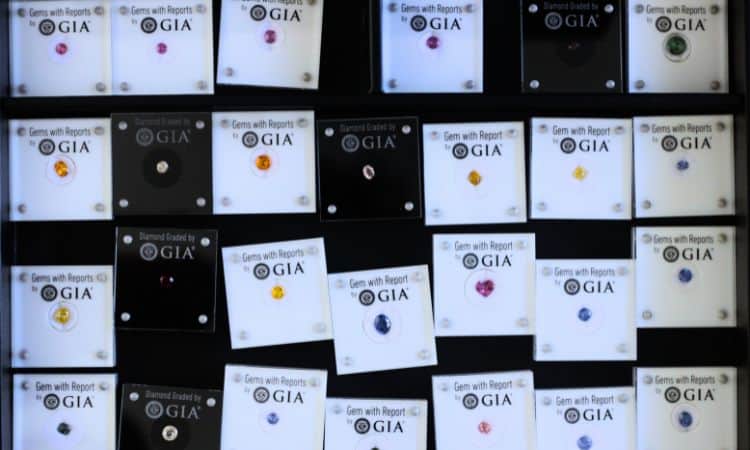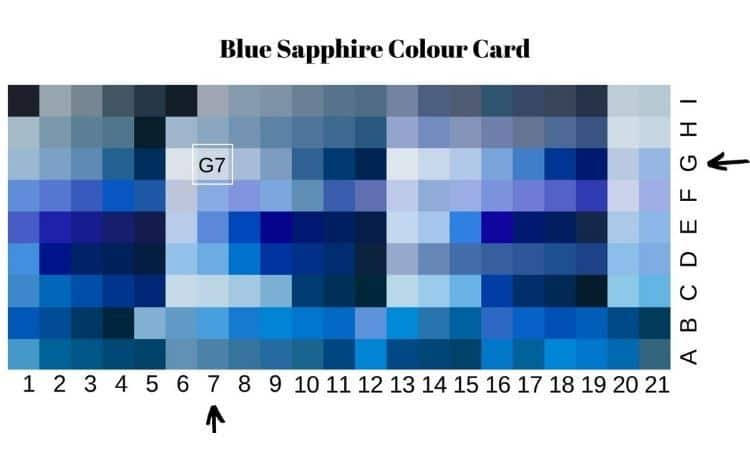How Do Sapphires Compare with Diamonds - A Gemological Report
Gemstones have captivated humans for centuries with their exquisite beauty and allure. Among these gemstones, sapphires and diamonds are renowned for their unique qualities and timeless appeal. In this gemological report, we will explore the distinctions between sapphires and diamonds, delve into why diamonds are considered more valuable despite their relative abundance, examine the impact of lab-grown diamonds on the natural diamond market, celebrate the enduring popularity of blue sapphires, and discuss the competition posed by white sapphires.
Comparing Sapphires and Diamonds
The value of sapphires depends on factors such as colour, clarity, and carat weight, much like diamonds, but with a specific emphasis on colour. Sapphires' rich palette and their historical significance, often linked to royalty and wisdom, make them exceptional choices for fine jewellery.
Diamonds, on the other hand, are celebrated for their unmatched brilliance and exceptional hardness, ranking 10 on the Mohs scale. They are more abundant in nature than sapphires, but their value is determined by the 4 Cs: cut, colour, clarity, and carat weight. The rarest and most valuable diamonds are those that are colourless or near-colourless. It's the scarcity of such high-quality diamonds that contributes to their premium pricing. Here we will analyse the characteristics of these two gemstones.
Sapphire Characteristics:
-
Composition: Sapphires are a variety of the mineral corundum, consisting primarily of aluminium oxide.
-
Colour Range: While sapphires are famous for their deep blue hue, they can occur in various colours except red, which would be classified as ruby.
-
Hardness: Sapphires are the second hardest natural mineral, scoring a 9 on the Mohs scale.
-
Brilliance: Sapphires possess a remarkable brilliance, which enhances their overall attractiveness.
-
Inclusions: Inclusions are common in sapphires, which can impact their clarity and, consequently, their value.
Diamond Characteristics:
-
Composition: Diamonds are composed of carbon atoms arranged in a crystal lattice structure.
-
Colour Range: While diamonds are known for their colourlessness, they can come in a range of colours, with the rarest being red and pure blue.
-
Hardness: Diamonds are the hardest natural substance, scoring a perfect 10 on the Mohs scale.
-
Brilliance: Diamonds are celebrated for their exceptional brilliance, reflecting and refracting light in a mesmerizing way.
-
Inclusions: Inclusions in diamonds are less common, and their absence significantly affects their value.
Why Diamonds are More Valuable Than Sapphires
Despite being more abundant in nature, diamonds are often more valuable than sapphires for several reasons. First and foremost is their enduring demand for engagement rings, a tradition deeply ingrained in many cultures. Additionally, diamonds have been skilfully marketed, portraying them as a symbol of love, rarity, and enduring beauty. The De Beers campaign in the 20th century is a prime example of this.
Furthermore, the diamond industry has established a tightly controlled supply chain, limiting the release of new diamonds into the market to maintain price stability. In contrast, sapphires have not seen the same level of promotion and branding, which has led to more fluctuations in their value.
The Effects of Lab-Grown Diamonds on the Market
The rise of lab-grown diamonds has introduced an interesting dynamic into the gemstone market. These man-made diamonds share almost identical physical and chemical properties with natural diamonds, making them a cost-effective alternative. While they might not replace natural diamonds entirely, they have affected the market by offering consumers a more affordable option. This competition has prompted the natural diamond industry to emphasize the unique qualities and heritage associated with natural stones.
Lab-grown diamonds, on the other hand, have made strides in the jewellery market, particularly for ethical consumers who prefer stones that do not involve environmentally destructive mining practices. It's worth noting that both natural and lab-grown diamonds have their places in the market, and each caters to different consumer preferences.
Blue Sapphires: The Top Blue Gemstone
Blue sapphires have maintained their position as the top blue gemstone in the world, primarily due to their rich, velvety blue colour and outstanding durability. While other blue gemstones like aquamarine and tanzanite have their own unique allure, sapphires' reputation is unparalleled.
One of the most famous blue sapphires is the Hope Sapphire, renowned for its deep blue hue and historical significance. Sapphires, with their elegance and timeless beauty, are often associated with royalty and are a symbol of wisdom, nobility, and protection. This deep-seated symbolism has only strengthened their position in the gemstone world.
The Competition from White Sapphires
White sapphires have emerged as a compelling alternative to diamonds, particularly for those seeking an affordable and ethically sourced option. White sapphires are valued for their brilliance and hardness, qualities akin to diamonds, although they do not have the same fiery sparkle.
|
Characteristic |
White Sapphires |
Diamonds |
|---|---|---|
|
Colour |
Colourless, often with a slight hint of grey |
Typically colourless or can occur in various colours |
|
Hardness (Mohs scale) |
9 (similar to natural sapphires) |
10 (the hardest gemstone) |
|
Brilliance |
White sapphires exhibit brilliance and sparkle but have less fire and dispersion compared to diamonds. |
Diamonds are renowned for their exceptional brilliance, fire, and dispersion. |
|
Value |
White sapphires are significantly more affordable compared to diamonds. |
Diamonds can vary widely in price based on the 4 Cs (cut, colour, clarity, and carat weight). High-quality diamonds are typically more expensive. |
White sapphires, while beautiful and brilliant, are more affordable than diamonds and have some distinctions in terms of fire and dispersion, making them an attractive alternative for those seeking a colourless gemstone. Diamonds, on the other hand, are renowned for their exceptional brilliance, fire, and dispersion, and their value varies widely based on their cut, colour, clarity, and carat weight.
The affordability of white sapphires makes them an attractive choice for those on a budget. However, it's important to note that white sapphires are not entirely colourless; they often have a subtle grey or bluish undertone, making them distinct from the pristine whiteness of diamonds.
In Summary
The world of gemstones is rich and diverse, offering a range of options to cater to individual preferences, budgets, and ethical considerations. While sapphires and diamonds have their unique characteristics and appeal, their value is often intertwined with history, marketing, and market dynamics. The advent of lab-grown diamonds and the emergence of white sapphires add exciting dimensions to the world of gemstones, giving consumers more choices and opportunities to explore the beauty of these precious stones. Whether it's a deep blue sapphire, a sparkling diamond, or a shimmering white sapphire, the world of gemstones continues to enchant and captivate us with its diversity and allure.



Comments (0)
Write your review